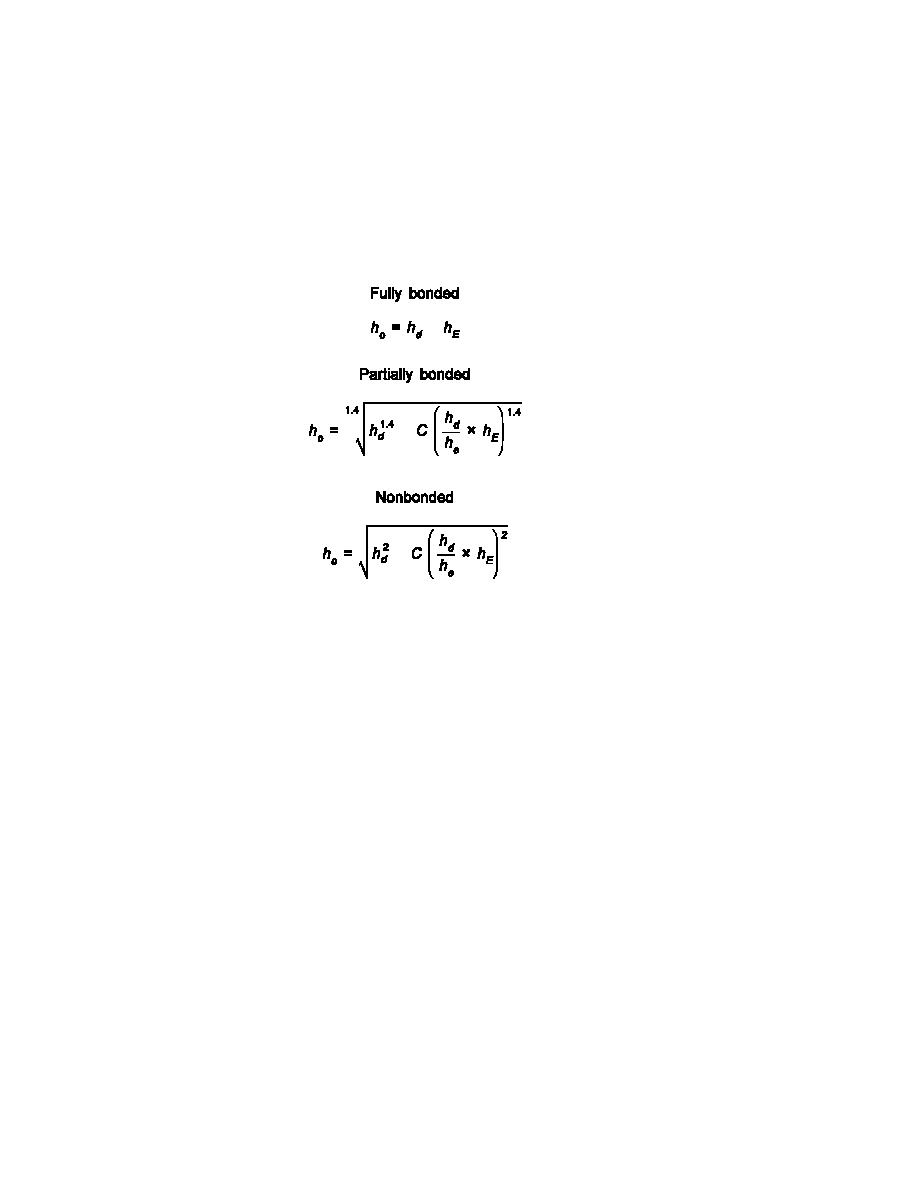
UFC 3-260-02
30 June 2001
(d) when matching joints in a plain concrete overlay with those in the existing plain concrete
pavement cause undue construction difficulties or result in odd-shaped slabs.
b. Plain Concrete Overlay.
(1) Thickness Determination. The required thickness ho of plain concrete overlay will be
determined from the following applicable equations:
(17-1)
&
(17-2)
&
(17-3)
&
where
hE = existing plain concrete pavement thickness
hd and he = design thicknesses of rigid pavement determined using the design flexural
strength of the overlay and measured flexural strength of the existing rigid
pavement, respectively; the modulus of soil reaction k of the existing rigid
pavement foundation; and the design loading, traffic area, and pass level needed
for overlay design.
Use of fully bonded overlay is limited to existing pavements having a condition index of 1.0,
and to overlay thickness of 50 to 120 millimeters (2.0 to 5.0 inches). The fully bonded overlay is
used only to correct a surface problem such as scaling rather than as a structural upgrade. The
factor hE represents the thickness of the existing plain concrete pavement or the equivalent
thickness of plain concrete pavement having the same load-carrying capacity as the existing
pavement. If the existing pavement is reinforced concrete, hE is determined from Figure 13-1 using
the percent reinforcing steel S and design thickness he. The minimum thickness of plain concrete
overlay will be 50 millimeters (2 inches) for a fully bonded overlay and 150 millimeters (6 inches)
for a partially bonded or nonbonded overlay. The required thickness of overlay must be rounded to
the nearest full- or half-inch increment. When the indicated thickness falls midway between a full
and half-inch, the thickness will be rounded upward.
(2) Jointing. For all partially bonded and fully bonded plain concrete overlays, joints will be
provided in the overlay to coincide with all joints in the existing rigid pavement. It is not necessary
for joints in the overlay to be of the same type as joints in the existing pavement. When it is
17-6



 Previous Page
Previous Page
